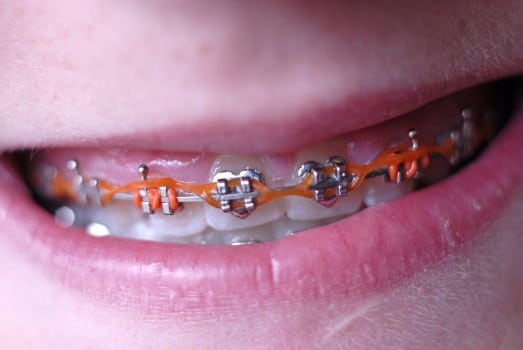Elastics are the rubber bands that your orthodontist hooks to your braces to assist movement. (They also include the ligatures that attach your brackets to the archwire.) Elastics typically pull the jaw forward or backward to align your top and bottom teeth, improving your smile and bite. They can cause some discomfort when you begin wearing them, but often shorten the overall time you need to spend in braces.
What Are They Made Of?
Elastics typically are made of a latex material, which is effective and affordable. However, alternative compositions are available for patients with latex allergies.
Size and Strength
The size—measured in diameter—of elastics depends on their purpose. Smaller elastics are used to connect to teeth that are closer together, and larger elastics connect teeth that are farther apart. Stronger elastics apply more pressure to move your teeth. Your orthodontist will choose the length and strength of the elastic that is right for you.
When Will I Wear Them?
In most cases, if you are prescribed elastics you will wear them nearly all the time. In some cases you can remove rubber bands to eat, floss or brush. You will need to change them daily—often multiple times—so always keep a pack handy.
Less is More
Follow your orthodontist’s directions about how to wear your elastics, and never double up to try to progress your treatment faster. Wearing multiple elastics produces so much pressure that it can slow the movement of your teeth and damage your roots.
How Will I Wear Them?
The teeth the orthodontist will attach your elastics to will depend on your course of treatment.
- Class I elastics connect an upper canine to one of the molars.
- Class II elastics stretch between an upper canine and a bottom molar.
- Triangle Class II elastics stretch from an upper canine to a bottom bicuspid, then from the bicuspid to a lower molar and back to the upper canine.
- Class III elastics hook between a bottom canine and an upper molar, from the molar to an upper canine and back to the bottom canine.
- Triangle Class III elastics start from a bottom canine that hooks to an upper bicuspid, and from the bicuspid to an upper molar and back to the lower canine.
- Anterior Triangle elastics connect an upper canine to a lower one, which connects to a premolar and back to the upper canine.
- Cross bite elastics run from the inside of an upper tooth to the outside of a bottom tooth.
- Midline elastics connect a series of teeth horizontally.Box elastics are attached to four teeth: two on the upper and two on the bottom, forming the shape of a box.
Can They Be Fun?
Absolutely! You have many opportunities to get creative with your elastics. They come in a wide variety of colors that you can mix and match to suit your clothes, shoes and even your mood! There’s no reason that your elastics can’t be used to accessorize!
At Orthodontic Associates, our friendly staff will outfit you with the right orthodontic appliances, including elastics, to meet your treatment goals. We strive to provide you with the best possible experience during and after braces. Contact us at any of our nine convenient locations around Baltimore, and see how we can help you achieve a winning smile.



